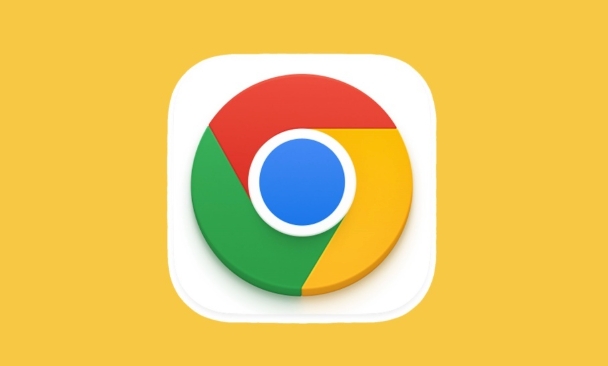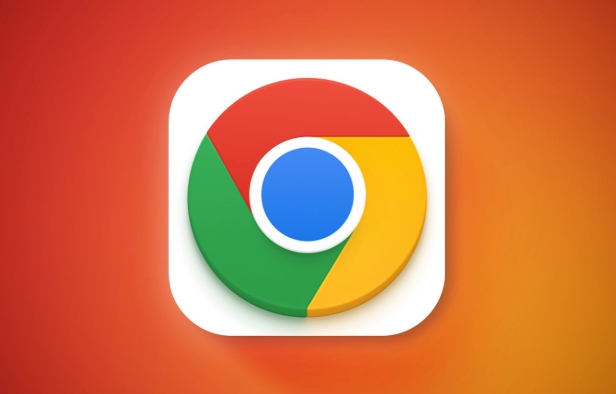Why is Chrome blocking a download for 'uncommon' reasons
Aug 01, 2025 am 03:41 AMChrome blocks some downloads as “uncommon” to protect users from potential threats. 1. This occurs when files don’t match common safe patterns, such as executables from unknown sites or archives with executable content. 2. Chrome’s Download Protection scans file signatures, checks sources, and uses machine learning to detect risks. 3. To proceed safely, click “Keep” if confident in the source, verify the site’s reputation, temporarily use another browser, or scan the file with VirusTotal. 4. Be concerned if the file comes from an untrusted site, downloads automatically, has a strange name or extension, or is flagged by antivirus software. Always confirm safety before proceeding.

Chrome sometimes blocks downloads that it considers "uncommon," which can be confusing if you're just trying to get a file and don't see anything suspicious. The short answer is: Chrome does this to protect users from potentially harmful software, even if the file isn’t clearly malicious.

Here’s what's actually going on and how you can handle it.
What Does "Uncommon" Mean in Chrome?
When Chrome says a download is "uncommon," it usually means the file doesn't match common patterns of safe downloads. This could include:

- Files that aren’t widely downloaded by other Chrome users
- Executable files (.exe, .bat, etc.) from less-known websites
- Archives (like .zip or .rar) containing executable content
- Files flagged by Google’s Safe Browsing system as suspicious
It's not always a sign of malware, but Chrome treats these with caution because they can pose a risk.
Why Chrome Blocks These Downloads
Chrome uses a built-in security feature called Download Protection. It checks every file you download against a database of known safe and unsafe files. If a file isn’t well-known or has traits associated with malware, Chrome steps in.

This system works by:
- Scanning file signatures
- Checking download sources
- Using machine learning to detect suspicious behavior
Sometimes, even legitimate tools or niche software trigger these protections simply because they’re not commonly downloaded through Chrome.
How to Deal With the Block
If you trust the source and want to proceed, here’s what you can do:
- Click “Keep” and confirm your choice — Chrome often gives you an option to keep the file after showing the warning.
- Check the site’s reputation — Is it a trustworthy developer or vendor? Avoid downloading from sketchy-looking sites.
- Use another browser temporarily — Some browsers may not flag the same file, though this shouldn’t be a long-term solution.
- Scan the file after download — Use a service like VirusTotal to double-check the file for threats.
That said, only bypass the block if you're confident about the file’s safety.
When You Should Be Concerned
You should pay attention when:
- The file comes from an unknown or untrusted website
- The download starts automatically without clicking a link
- The file has an unusual extension or name
- Antivirus programs also flag it later
These are signs that the file might not be safe, even if it looks harmless at first glance.
Most of the time, Chrome’s warning is just doing its job. But if you know what you're doing and still need the file, there are safe ways around it — just don’t skip checking things first.
The above is the detailed content of Why is Chrome blocking a download for 'uncommon' reasons. For more information, please follow other related articles on the PHP Chinese website!

Hot AI Tools

Undress AI Tool
Undress images for free

Undresser.AI Undress
AI-powered app for creating realistic nude photos

AI Clothes Remover
Online AI tool for removing clothes from photos.

Clothoff.io
AI clothes remover

Video Face Swap
Swap faces in any video effortlessly with our completely free AI face swap tool!

Hot Article

Hot Tools

Notepad++7.3.1
Easy-to-use and free code editor

SublimeText3 Chinese version
Chinese version, very easy to use

Zend Studio 13.0.1
Powerful PHP integrated development environment

Dreamweaver CS6
Visual web development tools

SublimeText3 Mac version
God-level code editing software (SublimeText3)
 How to stop Chrome from updating in the background on Mac
Jul 21, 2025 am 12:41 AM
How to stop Chrome from updating in the background on Mac
Jul 21, 2025 am 12:41 AM
To prevent Chrome from automatically updating on Mac, it can be done by disabling update services, modifying permissions, and restricting network access. 1. Use terminal commands to disable the GoogleSoftwareUpdate daemon to prevent background updates; 2. Modify update directory permissions to prevent Chrome from starting the update process by itself; 3. Restrict Chrome's outbound network connection through system firewall or third-party tools to further eliminate update requests. Using these methods in combination can effectively prevent Chrome from being automatically updated.
 How to stop Chrome from automatically opening PDF files
Jul 21, 2025 am 12:09 AM
How to stop Chrome from automatically opening PDF files
Jul 21, 2025 am 12:09 AM
To let Chrome download directly instead of opening it when clicking on the PDF link, 1. Enter chrome://settings/content/pdfDocuments to check "DownloadPDFfilesinsteadofautomatically opening theminChrome"; 2. Check whether there are plug-ins such as Lightpdf or Smallpdf interfering behavior, you can try to disable the test; 3. You can use the developer tools to copy the link and paste the new tag to trigger the download. The above methods can be selected according to the situation.
 How to fix screen tearing when scrolling in Chrome
Jul 25, 2025 am 12:55 AM
How to fix screen tearing when scrolling in Chrome
Jul 25, 2025 am 12:55 AM
The screen tear occurs when the Chrome browser scrolls, which is usually caused by the out-of-synchronization of rendering and refresh. The solutions are as follows: 1. Ensure that hardware acceleration is enabled, you can manually check the settings and restart the browser; 2. Forcefully enable Compositor and related options to optimize rendering; 3. Check the display refresh rate, use single-screen testing, and enable VSync or adaptive synchronization technology on supported devices; 4. Update the graphics card driver or replace the display interface such as using the DP interface. It is recommended to start the troubleshooting with simple steps and gradually adjust to find the best configuration.
 How to fix Chrome profile sync getting stuck in setup
Jul 25, 2025 am 01:10 AM
How to fix Chrome profile sync getting stuck in setup
Jul 25, 2025 am 01:10 AM
The problem of Chrome sync stuck can be solved through the following steps: 1. Check the network connection and Google account status to ensure normal access; 2. Log out and log in to the Chrome account again; 3. Clear the synchronized data and restart the browser; 4. Reset Chrome settings; 5. Try the traceless mode or new user profile. Sequentially checking can effectively restore the synchronization function.
 Chrome keeps opening new tabs by itself
Jul 22, 2025 am 12:22 AM
Chrome keeps opening new tabs by itself
Jul 22, 2025 am 12:22 AM
The problem of Chrome automatically popping up new tabs is usually caused by malicious extensions, advertising scripts, or browser hijacking. The solutions are as follows: 1. Check and uninstall suspicious extensions, especially ad-class plug-ins; 2. Clear browser caches and cookies to eliminate data corruption; 3. Check whether the homepage and default search engine settings have been tampered with and manually corrected; 4. Use antivirus software such as WindowsDefender or Malwarebytes to scan and clear potential malware; 5. Finally, try resetting Chrome settings to restore the default configuration. Troubleshooting in this order can effectively solve most abnormal labeling problems.
 How to fix Chrome opening new windows instead of tabs
Jul 26, 2025 am 01:29 AM
How to fix Chrome opening new windows instead of tabs
Jul 26, 2025 am 01:29 AM
1. Check whether the shortcut attribute has additional parameters and delete it; 2. Clear cache and switch startup settings, or create new user information; 3. Extend the impact and disable the problem plug-in through traceless mode. Chrome pops up new windows instead of tabs usually due to exceptions in shortcut parameters, cache configuration conflicts, or third-party extension interference. Check and adjust the corresponding settings in turn to resolve.
 How to fix Chrome when it's not printing correctly
Jul 26, 2025 am 02:46 AM
How to fix Chrome when it's not printing correctly
Jul 26, 2025 am 02:46 AM
Chrome printing exceptions can be solved in the following ways: 1. Check the printer selection, paper size, orientation, zooming and background graphics settings in the print preview; 2. Try stealth mode to eliminate extended interference and clear cache; 3. Update or reinstall the printer driver, replace the general driver or use the "Print as PDF" method; 4. Finally, you can reset the Chrome settings to restore the default. Most problems can be solved through the first few steps. If they still fail, you can export PDF to print.
 How to use Chrome's built-in 'contrast ratio' checker
Jul 20, 2025 am 12:40 AM
How to use Chrome's built-in 'contrast ratio' checker
Jul 20, 2025 am 12:40 AM
Chrome's "Contrast Ratio" check tool can be found directly under the "Computed" panel of the developer tool, which is used to determine whether the text and background colors meet the accessibility standards. Select the text element when using it, open the color selector next to the "color" property, and the contrast ratio will be displayed at the bottom. If it is below the standard, a red warning will be displayed, and if it is met, it will be green. The WCAG standard requires at least 4.5:1 text and at least 3:1 large fonts to ensure that people with visual impairment can also read clearly. Common questions include light-colored text, similar color matching or picture background interference, etc. This tool is suitable for casual inspection when debugging styles, especially when modifying color schemes or repairing UI components, and it is recommended to evaluate translucent or






